|
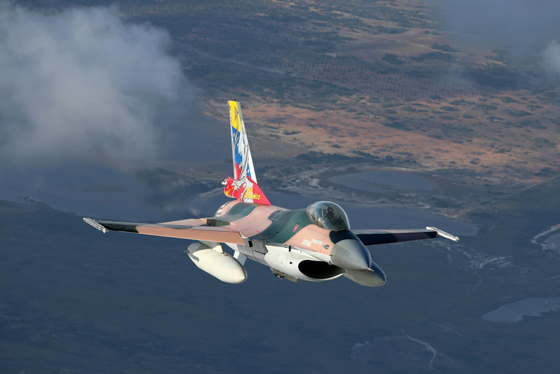
Pictured during the press flight a
F-16 of the Venezuelan air force celebrating 30 years of the “Grupo de
Caza 16”. Which was created specifically to host the model and whose
symbol is a dragon
|
|
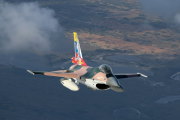 |
|
Still going
strong with Venuzuelan Air Force
|
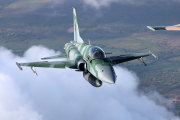 |
|
These upgraded
F-5EM are going to replace the Mirage 2000
|
|
|
|
|
|
|
Between November 4th and 15th the
seventh edition of Cruzex took place in Natal, over the areas known as
Rio Grade de Norte and Pernambuco. In this seventh edition off Cruzex
eight countries participated with over 90 planes participating.
The Cruzeiro do Sul Exercise (CRUZEX) is a multinational flight exercise
organized by the Brazilian Air Force. The first edition was held in 2002
and since then has changed and improved the way to employ airpower.
Except for the 2002 and 2006 AB edition, all the editions took place at
the Natal Air Base. This base has the necessary structure to conduct
such an exercise, as well as favourable climatic conditions and
location.
CRUZEX is designed to train the Air Forces in the planning of combined
operations with friendly countries, as well as training the military
personnel of the Brazilian Air Force to operate in a modern structure of
command and unified control of aerial power
The history of Cruzex starts in 2000 when Brazilin observers participate
in in the Odex exercise in France. During this exercise the following
scenario was followed as an inspiration for Cruzex. The exercise
simulated an armed conflict between Border States that due to the
international law, the intervention of a peacekeeping force was
necessary for the ceasefire, the process of "peace enforcement". As seen
in the conflict in the Gulf region and the Balkan these scenarios are
now more common than the old cold war scenarios and the Brazilian air
force wanted to prepare itself for a possible commitment for such an
event. From 2000 on preparation started for the first Cruzex exercises
Brazil. Over the past exercises thirteen foreign countries participated
and other countries joint as observers.
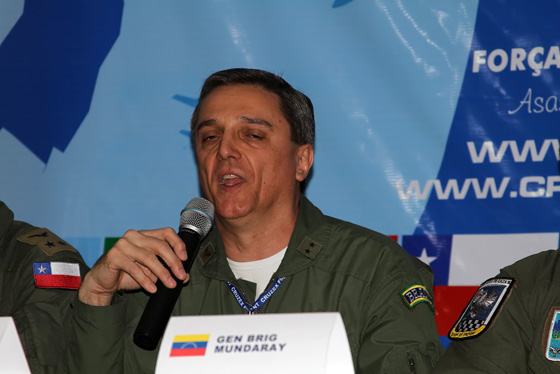
The Exercise Director Major General
Mário Luís da Silva Jordão, explains the changes applied to the last two
editions of CRUZEX during the press conference at the start of Cruzex
2013.
TThe first edition of Cruzex took place
at Canoes air base in 2002, next to Brasilia Argentina, Chili and France
participated in the exercise that was based on an invasion like the one
in Kuwait. That would test the command and control structure and joint
planning of combat missions. It was the first time ever the NATO
procedures were used in a South American combined exercise and it was
herald a success. FAB concluded that the exercise results were very
satisfactory and paved the way for CRUZEX
In 2004 the second edition was held at Natal air base, this edition
included air forces from Argentina, France and Venezuela, as well as the
host nation Brazil, while Peru, South Africa and Uruguay sent observers.
The exercise was designed on a simulated low intensity air campaign
scenario within the constraints imposed by peacetime regulations and
safety issues. Two main Brazilian air bases, Natal and Fortaleca, where
involved in the fictitious clash between two countries, Green and
Yellow, fighting over an area rich in mineral resources.
The third edition was held at Annapolis air base in 2006, The Exercise
is a scenario was as in the previous exercises based on an UN controlled
conflict featuring three fictitious nations: Red Land, which has invaded
its ex-territory Yellow Land, and the Blue Land who supports the Yellow
Land people. To push the Red Forces out of the invaded Yellow territory
the Blue Land forms a coalition force with Argentina, Chile, and
Uruguay, Venezuela and France and goes to war against the Red Land. The
Peruvian Air Force was intended to participate also, but sadly one of
its A-37B aircraft crashed while in route to Annapolis AB killing the
crew.
Again placed at Natal Air base the
fourth edition was in 2008, participants included next to the host
nation Chile, France, Uruguay and Venezuela. Argentina was to have
participated, but was forced to cancel shortly before the exercise
began. The scenario for the exercise was compatible with previous years,
as a simulated low intensity air campaign within the constraints imposed
by peacetime regulations and safety issues.
In 2010 the fifth edition of Cruzex at Natal Air base was heavily
influenced by the knowledge gained in the Red Flag exercise 08-03 in
which Brazil participated.
In the fifth edition the air forces of Argentina, Brazil, Chile, the
United States, France and Uruguay participated actively in the exercise.
The number of countries that where participating as observers during the
exercise grew again. Highlighting the importance given to this exercise
in the region. For the United States air force it was the first
participation with aircraft after being an observer in previous years.
France a member since the first Cruzex brought their Rafale and Mirage
2000, where the Rafale could be seen as a contender to replace the
Mirage 2000.
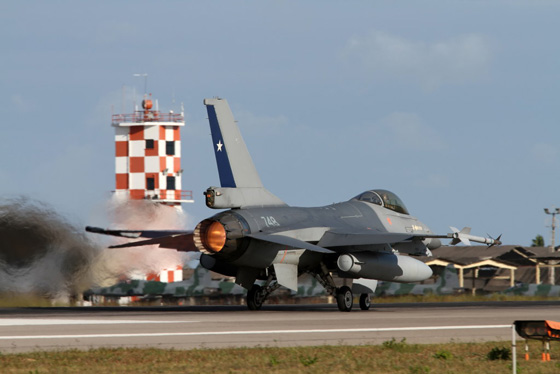
A Chilean F-16AM takes off with full
power During Cruzex
F-16AM 748 is on of thirty-eight F-16's bought from the
Royal Netherlands air force. 748 served as J-867 until with the RNLAF
until its delivery to Chilli on 04-04-2011
Already the sixth edition of Cruzex at
Natal air base in 2012 was fully a command and control exercise, in
other words there was no actual flying during the exercise. With
personnel from Brazil, Argentina, Canada, Chile, Ecuador, United States,
France, United Kingdom, Peru, Sweden, Uruguay and Venezuela, this year's
edition of CRUZEX has the largest number of participants ever in the
exercise. The 2012 version of Cruzex was also a preparation for the 2013
event.
In this year’s exercise the seventh edition of Cruzex ones again held at
Natal air base approximately 100 aircraft took part in the exercise, of
which about 85 of where based at Natal. Countries that participated
included; Brazil, USA, Chile, Venezuela, Uruguay, Ecuador, Colombia and
Canada. Argentina which took part in all the preparations cancelled
their participation with the Douglas A-4 Skyhawk on the last moment,
there place in the planned exercise was filled by Brazil.
The Joint Force Air Component Command (JFACC) was headquartered at Natal
air base, while additional units were stationed at Recife. Operating
from Natal air base with many of the fighter types housed in sun
shelters. The participating air forces were composed of Two Canadian
Lockheed C-130J Hercules not as transport, but this year the exercise
will also include specific missions for transport aviation, such as
airborne special forces launching;
Fife Chilean Lockheed Martin F-16A
Falcons ; Six Colombian Cessna A-37 Dragonfly From Barranquilla in the
north of Colombia To reach Natal more than 4,700 kilometres had to be
flown. The trip lasted for two days, with one night spent in Manaus. In
the two flight segments in a row, the KC-767 refuelled five times each
of the six A-37 Dragonfly; Ecuador sent four Embraer Super Tucano
aircraft ; Uruguay sent a three Cessna A-37B Dragonflies and a three of
FMA IA-58 Pucaras, while Venezuela and the United States contributed
with fife and six Lockheed Martin F-16A Falcons.
Brazil participated with the largest force drawn from different
squadrons of the air force . Operating from Natal were five Dassault
Mirage 2000 in there last month of operating for the Brazilian air force
as there are to be withdrawn from service at the end of November,
eighteen Lockheed F-5EM Tiger IIs, twelve Embraer A-1A, A-1B, A-1A
reconnaissance AMX, four Embraer A-29 Super Tucanos; two Lockheed C-130
Hercules and two Casa C-105 Amazonas. Next to the fixed wing aircraft a
helicopter force participated including one Aerospatiale H-34 Super
Puma, one Bell H-1H Iroquois; four Sikorsky UH-60L Blackhawks and new to
the exercise where three AH-2 Sabre Mi-35 acting in the Special
Operations Combat Search and Rescue (CSAR) role.
Brazil participated with the largest force drawn from different
squadrons of the air force . Operating from Natal were five Dassault
Mirage 2000 in there last month of operating for the Brazilian air force
as there are to be withdrawn from service at the end of November,
eighteen Lockheed F-5EM Tiger IIs, twelve Embraer A-1A, A-1B, A-1A
reconnaissance AMX, four Embraer A-29 Super Tucanos; two Lockheed C-130
Hercules and two Casa C-105 Amazonas.
Next to the fixed wing aircraft a
helicopter force participated including one Aerospatiale H-34 Super
Puma, one Bell H-1H Iroquois; four Sikorsky UH-60L Blackhawks and new to
the exercise where three AH-2 Sabre Mi-35 acting in the Special
Operations Combat Search and Rescue (CSAR) role.
Operating from the Recife military apron was the tanker force including;
Colombian Boeing KC-767, the Chilean and the American Boeing KC-135
Stratotanker together with the Brazilian Lockheed KC-130 Hercules and
Embraer E-99 Airborne Early Warning & Control aircraft.
During the exercise Caicó airfield served as a base for a H-34 Super
Puma helicopter of the Brazilian Air Force for possible search and
rescue missions. Located 250 kilometres away from Natal, Caicó airfield
is a strategic point it is here that a three-dimensional radar TPS-B34
together with command and control equipment was installed to control the
exercise. The management of air traffic was performed by the Third
Integrated Centre for Air Defence and Air Traffic Control (CINDACTA III)
at Recife. With the use of new techniques and equipment for the creation
of a three dimensional picture of the exercise for debriefing purposes’
was greatly improved.
The participating nations trained alongside each other in fictitious
scenarios to prepare for potential events across the world. These
internationally-sanctioned actions might include supporting peacekeeping
and stability operations, supporting civilian authorities during
humanitarian response operations and assisting coalition neighbours in
the aftermath of a natural disaster. In the years the missions became
more varied and know include combat search and rescue, aerial refuelling
and combined air operations centre training opportunities focused on
interoperability. During the exercise no live weapons where used, only
simulated attacks were carried out.
The Exercise Director Major General Mário Luís da Silva Jordão,
asserted the changes applied to the last two editions of CRUZEX,
especially the division between the real use of aircraft and the virtual
environment of the exercise, previously operated at the same time.
"CRUZEX evolves every edition and our experience has made us conclude
what we should focus on. The intention is to excerpt the most of each
operation and now I can say that, with these changes, our goals have
been achieved", he said.
The size and quality in exchange of experiences allows Cruzex ranked it
one of the most important multinational exercises, and most importantly
in the context of Latin America. This importance with each new edition
attracts more participants / observers countries
We thank the Brazilian Air Force HQ
for arranging our visit to Cruzex 2013 and especially the
staff at Natal air base for their hospitality and help during our visit.
|